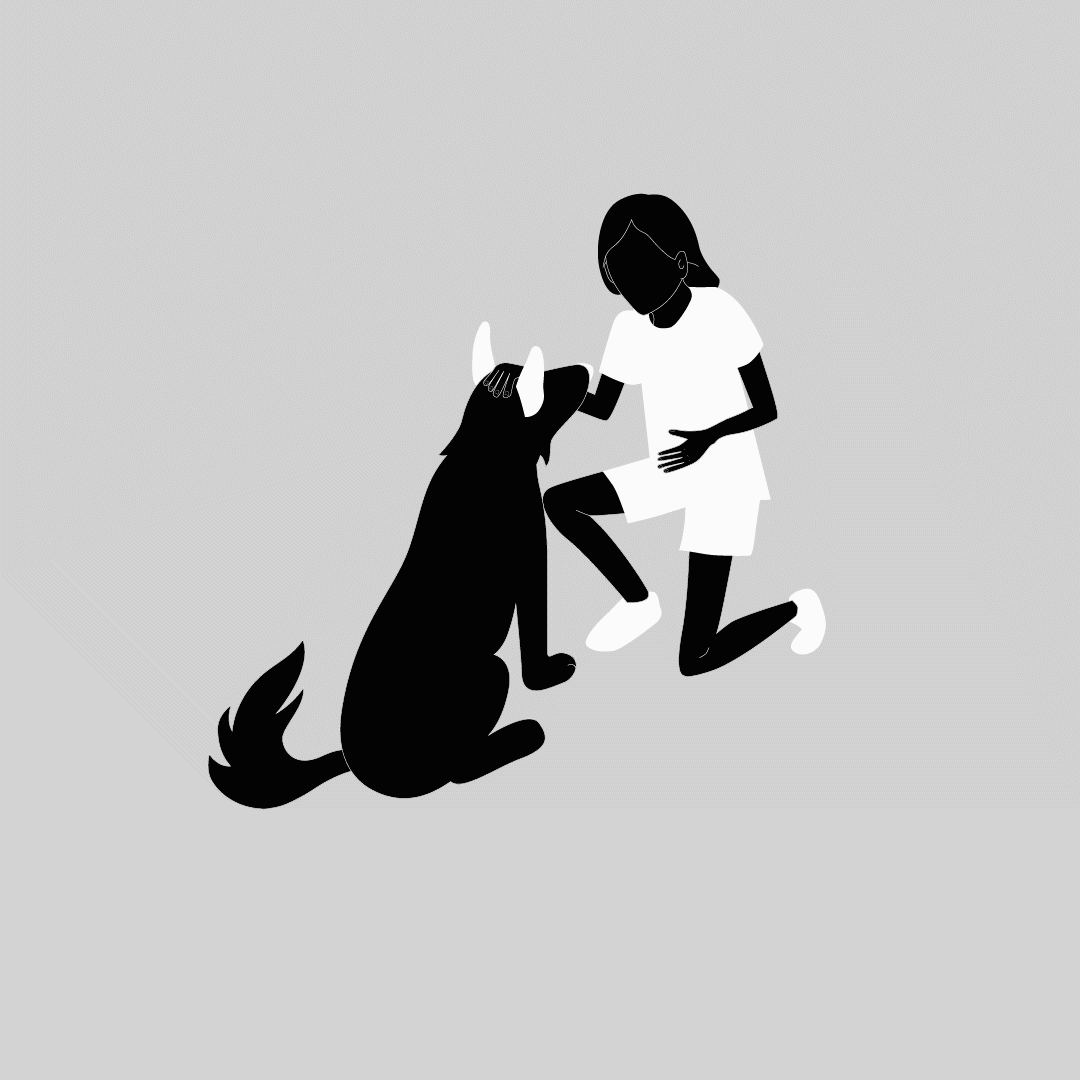THE TREATMENT OF STRAY DOGS IN KOSOVO
In order for state projects to function fully there need to be continual projects with adequately allocated funds. Sterilization projects on yearly basis, done by contracted professional veterinarians, and offering a solution for permanent shelter for stray dogs. Therefore, it is very important to have legislation properly implemented but also have awareness campaigns regarding this.

Illustration: Argjira Kukaj
Each one of us has seen them around the city, searching for food or shelter. I am talking about stray dogs, a solution for whom has yet to be found. There isn’t a clear number on how many stray dogs are in Kosovo. In lack of a space, they live on the streets and during winter, when there is less food, they can get aggressive. Cases of attacks are not uncommon.
In 2017, the government of Kosovo had allocated 1.3 million euros for the treatment of stray dogs and gave the responsibility of implementation to the Agency for Food and Veterinary. Although in 2018 from this project 14 thousand dogs benefited, this project was mismanaged. At the time when these dogs were getting treated, there were only a few municipalities like Suhareka, Prizren, Fushe Kosova and Prishtina, which began partial implementation. Stray dogs do not understand the concept of municipality borders, and so this issue cannot go unsolved in some municipalities and solved in others. Treatment is defined when dogs within the entire territory get vaccinated, medical attention for the ones that require it, and sterilization.
Beyond the geographically limited treatment of stray dogs, this initiative has been criticized by the Foundation for Animal Rights for contracting unqualified veterinarians to sterilize these dogs. According to this organization, the veterinarians who are hired by the Agency for Food and Veterinary are supposed to have temporary shelters for the dogs that are hospitalized. The dogs should be sheltered for 5 to 7 days for their wounds to heal before being returned to the streets. After visiting these clinics, Foundation for Animal Rights have reported that sterile gloves were not always available for medical treatment and examination and some of the vets were not capable of choosing surgical stitches. There were no state inspections on these sites.
This situation isn’t helped by the negative perception society has on stray dogs. Often, dogs are used by parents to scare their children by telling them: “the dog will bite you”, this leads to children viewing dogs as dangerous beings. Stray dogs become aggressive, due to the way they are sometimes treated and by being forced to fight other dogs by reckless humans. In this category also fit dog murders, poisonings, mistreatments that cause trauma, all of which manifest into aggression.
Dogs are not dangerous as long as they are treated correctly, dogs which attack can be traumatized or scared. This vicious cycle is maintained by the fact that Kosovo still has no national plan for stray dog treatment- is said in a report by the Ombud’s Person in 2020. This report emphasized the failure in the management of the stray dog situation both by local and central institutions. Based on this report most municipalities do not have a center for temporary shelter and treatment of animals, and they also do not have a designated site for the safe disposal of dead animals.
In order for state projects to function fully there need to be continual projects with adequately allocated funds. Sterilization projects on yearly basis, done by contracted professional veterinarians, and offering a solution for permanent shelter for stray dogs. Therefore, it is very important to have legislation properly implemented but also have awareness campaigns regarding this.
About the author: Vera Thaqi, 21 year old from Gjakova, studies law at the University of Prishtina.
This grant is supported by the Balkan Trust for Democracy, a project of the German Marshall Fund of the United States



Nice post. Intriguing subject and approach. Ill be coming back some time within the not too distant future.